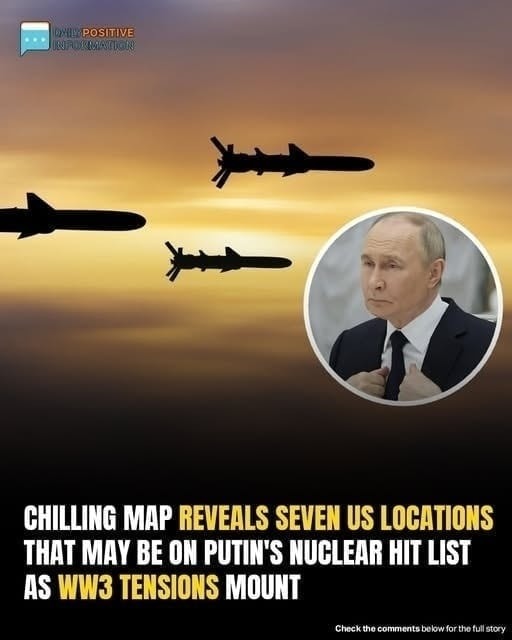Doomsday map ‘leaked’: These 7 U.S. cities are Put!n’s pr!me nuc!ear targets
Despite alarming headlines and the circulation of dramatic maps that claim to predict scenes of widespread destruction, the real situation is far more complex than the most frightening stories imply. Many of the nuclear targeting lists that spread online originate from open source speculation rather than from any classified military planning. These lists often rely on public information about military bases, industrial centers, or energy facilities and then present those guesses as if they came from insider material. In reality, governments that possess nuclear weapons fully understand that any deliberate strike would trigger overwhelming retaliation. This shared understanding is precisely why nuclear arsenals function mainly as instruments of deterrence. They exist to prevent conflict by making the consequences of escalation unthinkably severe, not as tools that military planners expect to use in ordinary strategic considerations.
This does not mean that nuclear risks are imaginary. They are real, and they deserve steady attention. Still, context plays an essential role in understanding how those risks operate. Ongoing conflicts can create moments of tension. Proxy struggles may inflame regional rivalries. Heated political language can make international situations appear as if they are poised to collapse into chaos. In such moments it is easy for the public to feel that the world is permanently balanced on the edge of disaster. Yet alongside these troubling signals there are also powerful stabilizing mechanisms. Direct communication channels link capitals that might otherwise misinterpret each other’s movements. Long standing arms control arrangements, even if weakened or incomplete, continue to shape expectations and place limits on certain behaviors. Traditional doctrines that emphasize restraint, second strike capability, and the need to avoid rapid escalation remain deeply embedded in military thinking.
For individuals, this combination of risks and safeguards means that perspective is essential. sensational maps that circulate without verification may stoke fear, but they rarely offer insight. They often leave out the political factors, diplomatic relationships, and strategic calculations that define how governments actually behave. Citizens gain far more from grounding their understanding in credible information. Following expert analysis, reading balanced assessments, and recognizing the difference between speculation and fact provide a clearer sense of the real landscape.
Support for diplomatic efforts is also meaningful. Dialogue between nations, even when relations are strained, helps reduce the chance of misunderstanding. Programs that encourage transparency, confidence building, and crisis communication serve the same purpose. They lower the temperature when tensions rise and create space for negotiation rather than confrontation.
On a personal level, understanding basic emergency preparedness can also provide a sense of agency. This does not require dwelling on catastrophic outcomes. It simply means learning practical steps that are useful in a wide range of emergencies, such as knowing where to seek shelter, how to access reliable alerts, and which sources of information remain trustworthy during fast moving events.
By focusing on informed perspective, diplomatic engagement, and practical preparedness, individuals can navigate a world that contains serious risks without being overwhelmed by fear.
